Disclaimer
Rembrandt
1606 - 1669
1640 Self Portrait of Rembrandt

Rembrandt Harmenszoon van Rijn (July 15, 1606 - October 4, 1669) was a Dutch painter and etcher. He is generally considered one of the greatest painters and printmakers in European art history and the most important in Dutch history. His contributions to art came in a period that historians call the Dutch Golden Age.
Having achieved youthful success as a portrait painter, his later years were marked by personal tragedy and financial hardship. Yet his drawings and paintings were popular throughout his lifetime, his reputation as an artist remained high and for twenty years he taught nearly every important Dutch painter. Rembrandt's greatest creative triumphs are exemplified especially in his portraits of his contemporaries, self-portraits and illustrations of scenes from the Bible. The self-portraits form a unique and intimate biography, in which the artist surveyed himself without vanity and with the utmost sincerity.
In both painting and printmaking he exhibited a complete knowledge of classical iconography, which he molded to fit the requirements of his own experience; thus, the depiction of a biblical scene was informed by Rembrandt's knowledge of the specific text, his assimilation of classical composition, and his observations of the Jewish population of Amsterdam. Of his empathy for the human condition, he has been called "one of the great prophets of civilization.
Saul and David
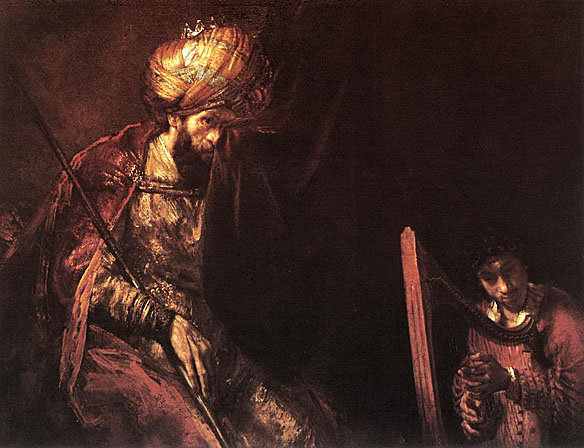
Supper at Emmaus

Suzanna in the Bath
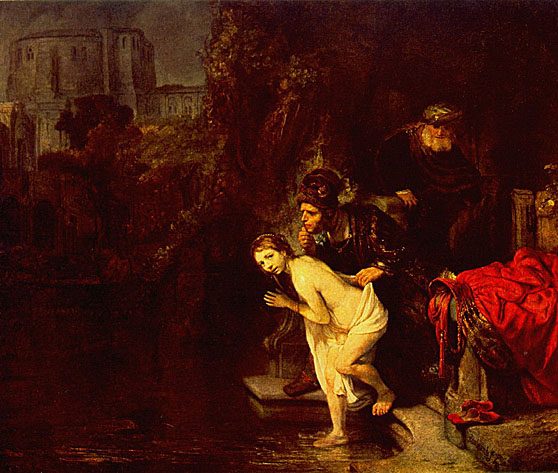
The Archangel Leaving the Family of Tobias
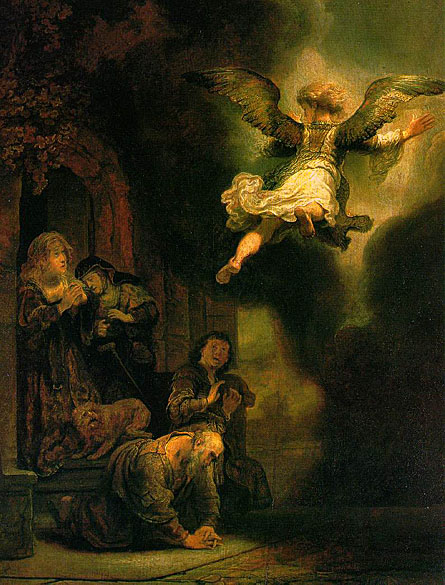
The Blinding of Samson
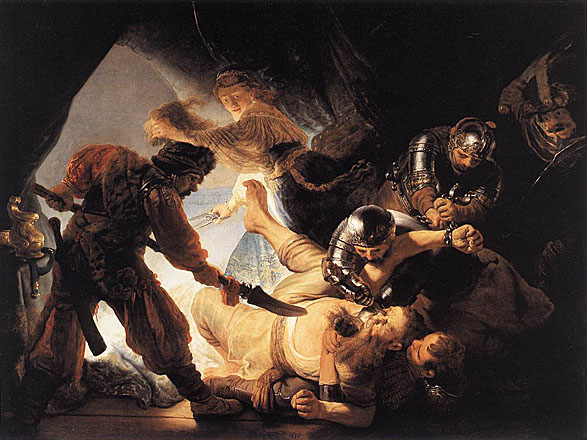
The Dream of St Joseph
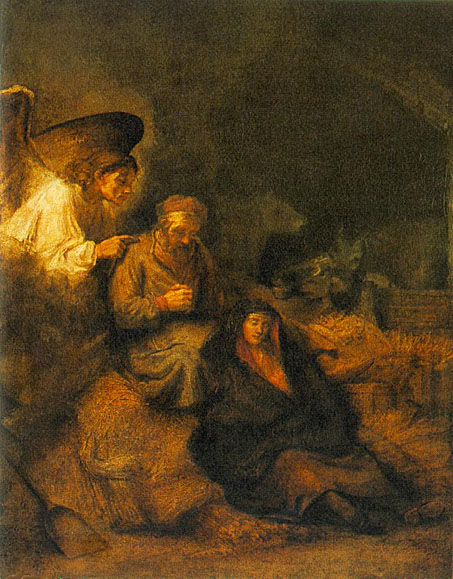
The Holy Family
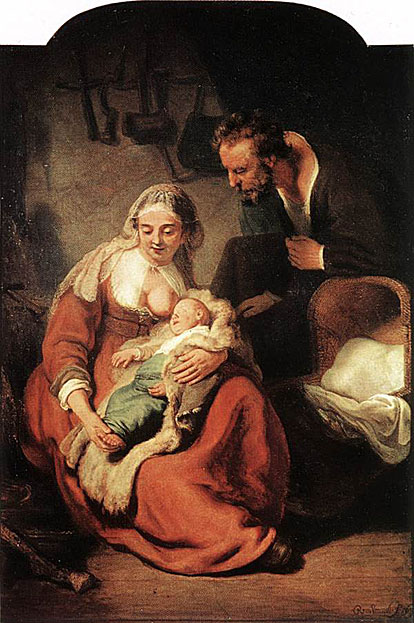
The Holy Family With A Curtain

The Holy Family With Angels
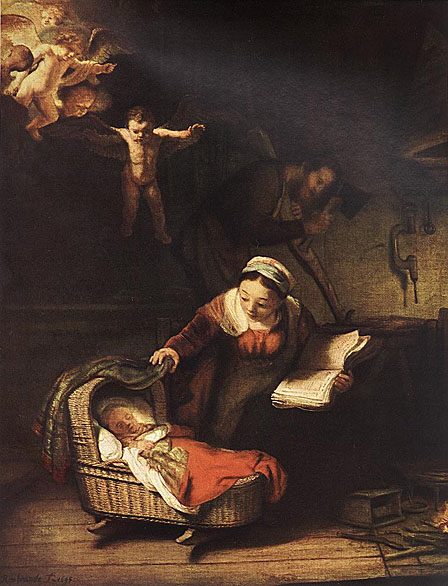
The Incredulity of St Thomas

The Raising of Lazarus

The Return of the Prodigal Son
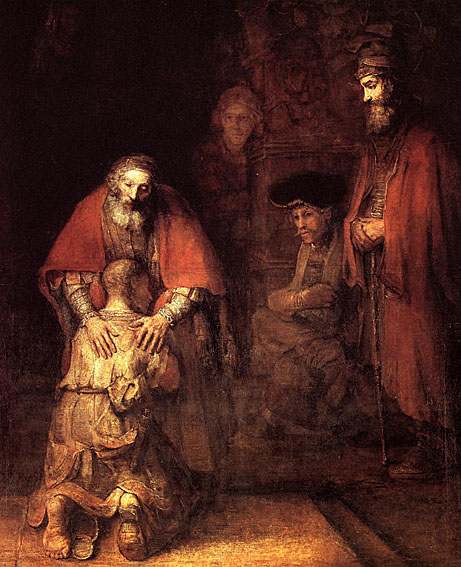
The Risen Christ Appearing to Mary Magdalen
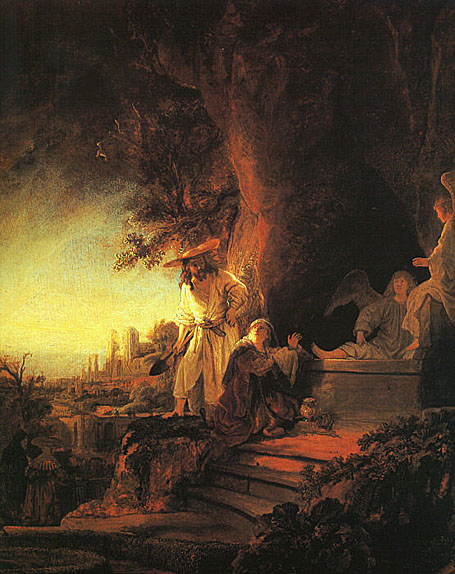
The Sacrifice of Abraham
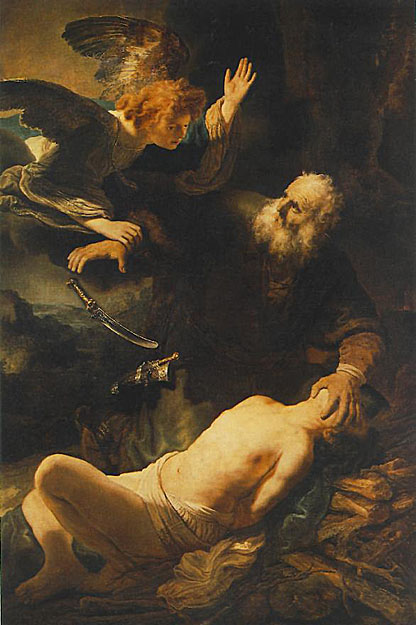
Adoration of the Shepherds
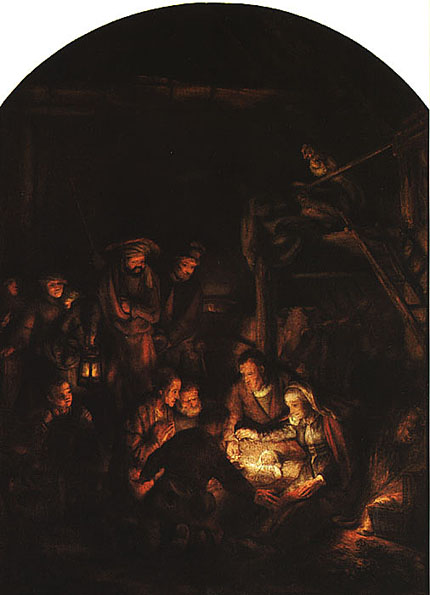
The Apostle Paul
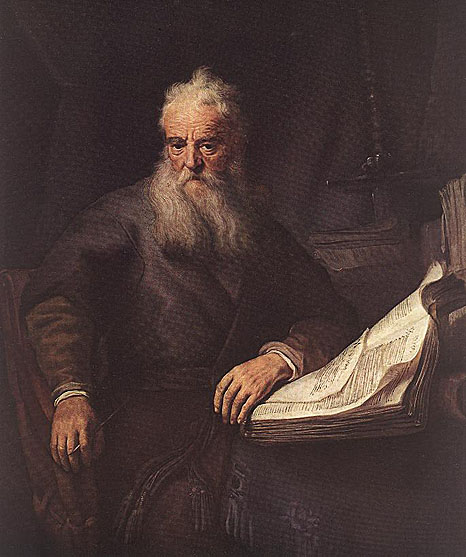
Bathsheba At Her Bath
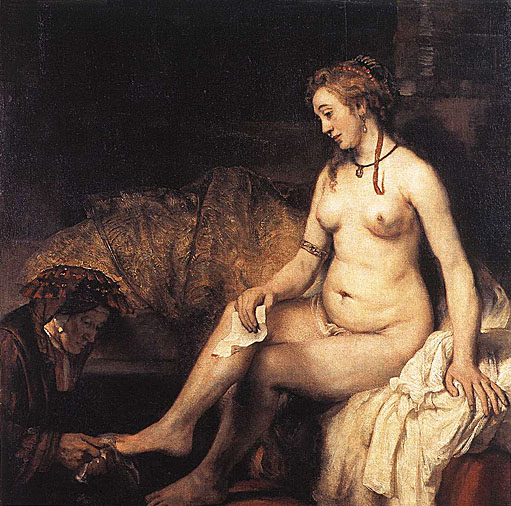
Belshazzar's Feast

Biblical Scene
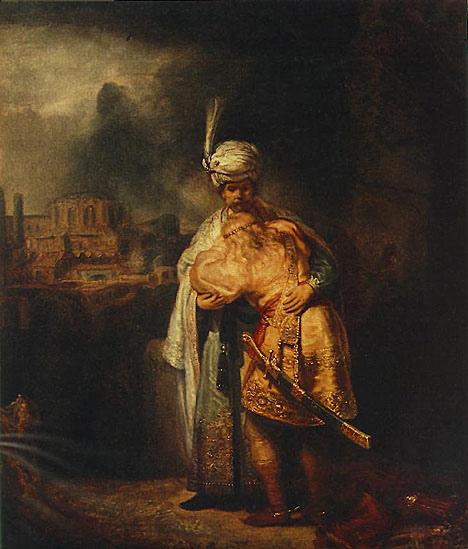
Christ and the Woman Taken in Adultery
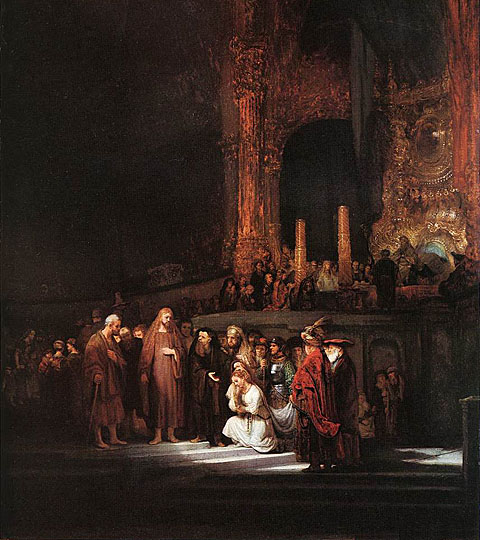
David and Uriah
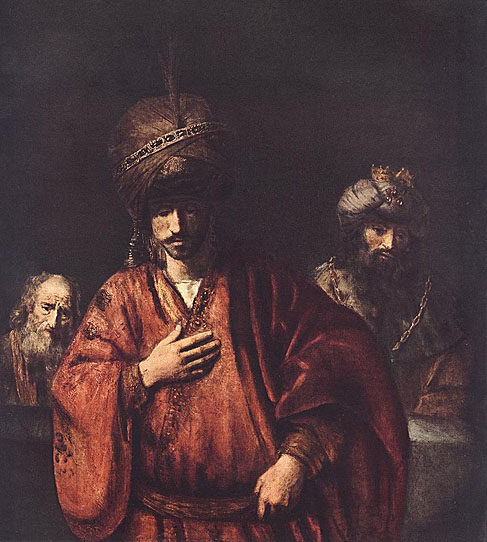
The Elevation of The Cross
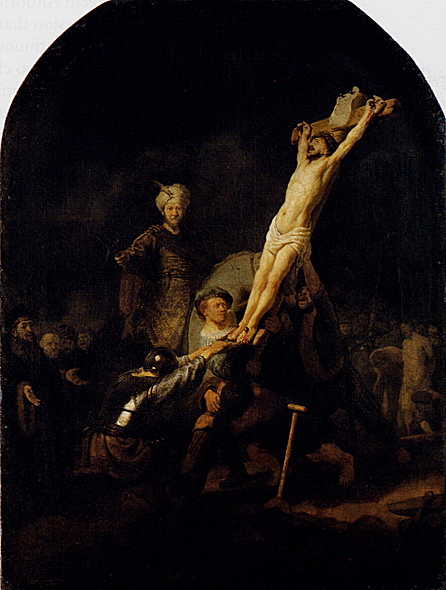
Deposition from the Cross
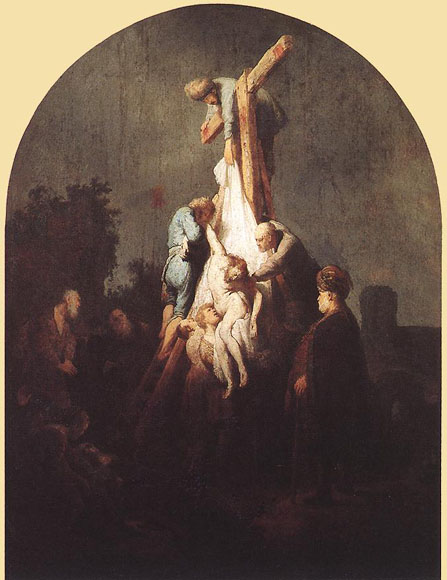
Descent From the Cross
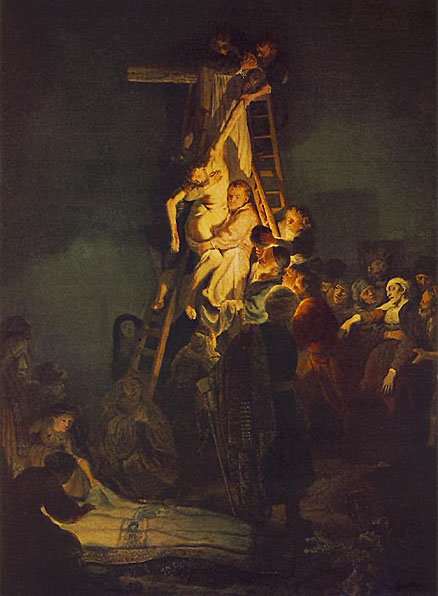
The Ascension of Christ
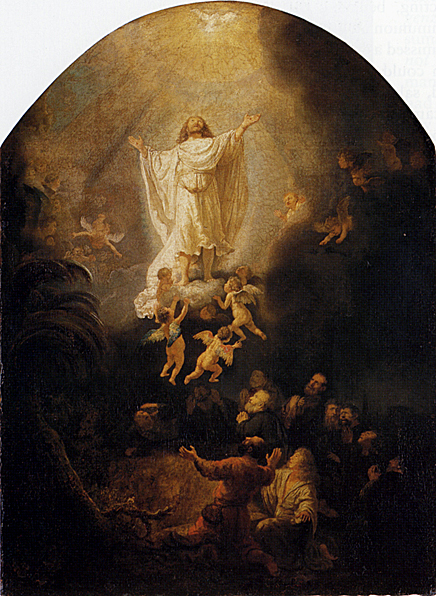
The Evangelist Matthew
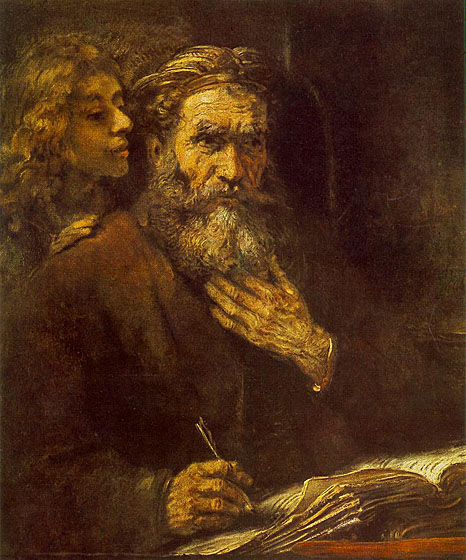
The Holy Family
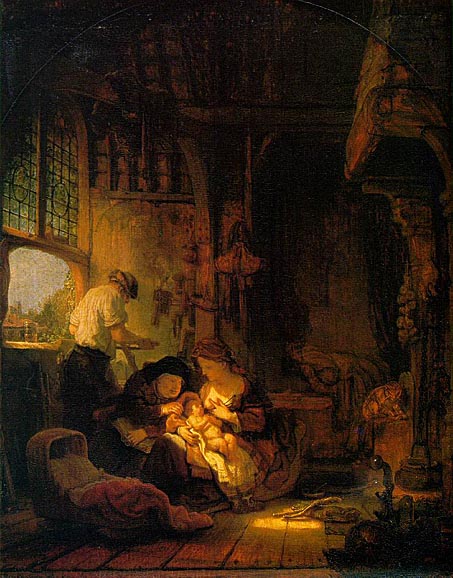
Jacob Blessing the Children of Joseph

Jeremiah Lamenting the Destruction of Jerusalem
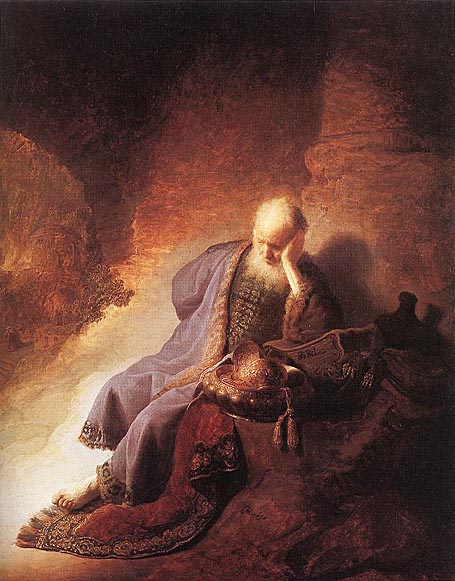
Joseph Accused by Potiphar's Wife
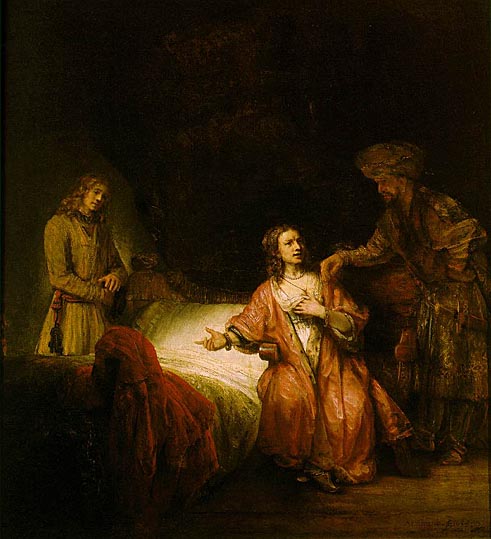
Peter Denouncing Christ
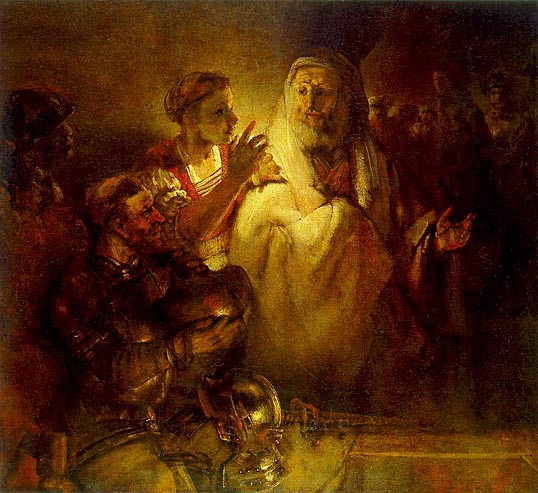
Christ Driving The Money Changers From The Temple
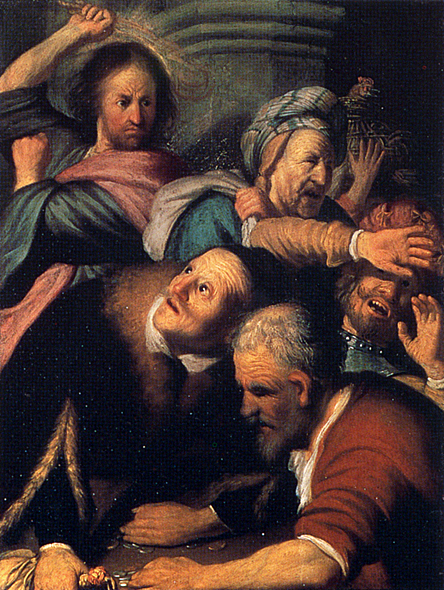
Christ In The Storm On The Sea Of Galilee
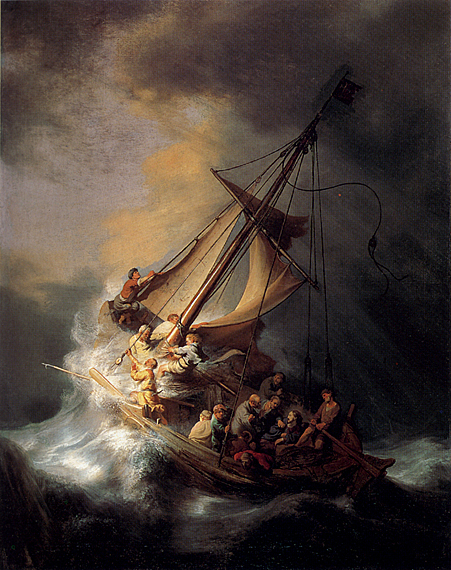
Christ On The Cross
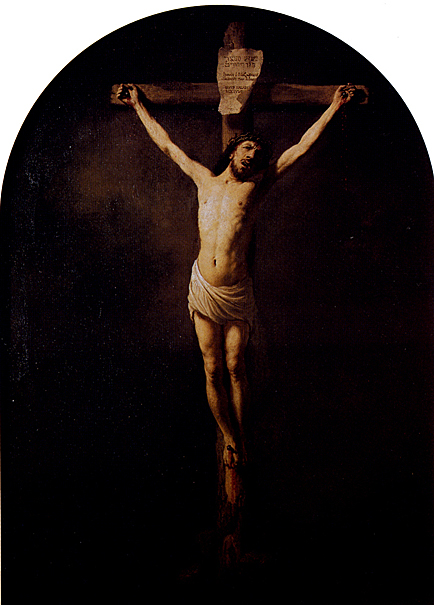
Danae

David Playing The Harp To Saul
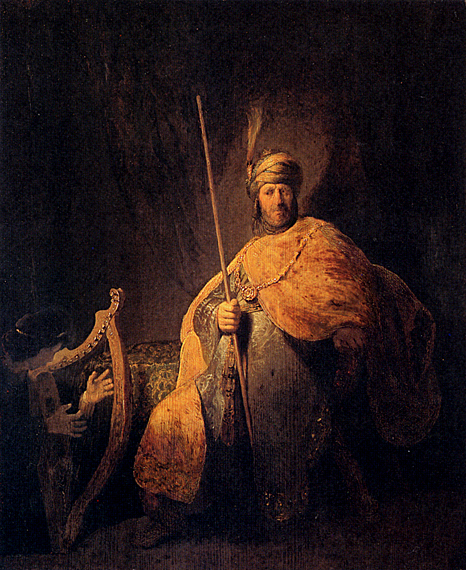
Portrait of A Bearded Man

Portrait of an Elderly Man
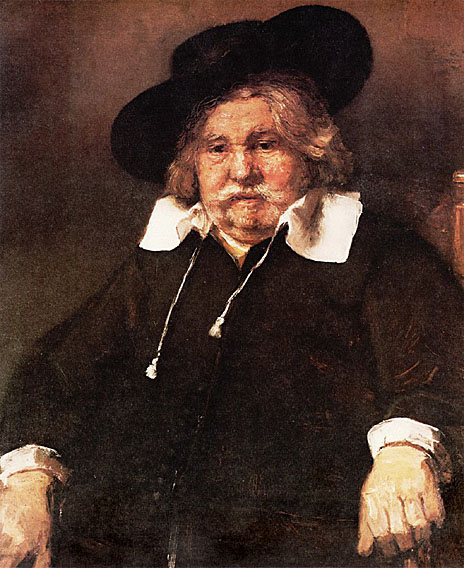
A Girl at a Window
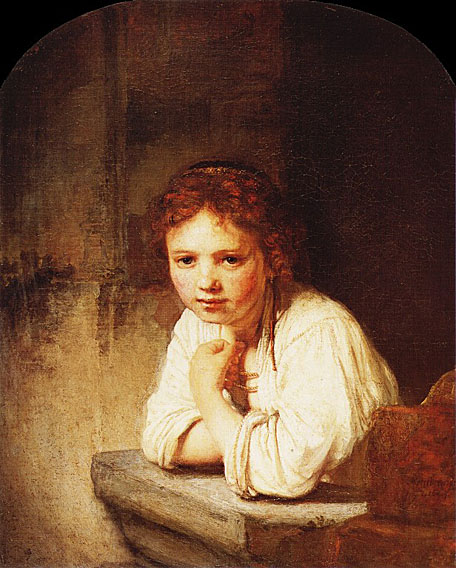
Aristotle With a Bust of Homer
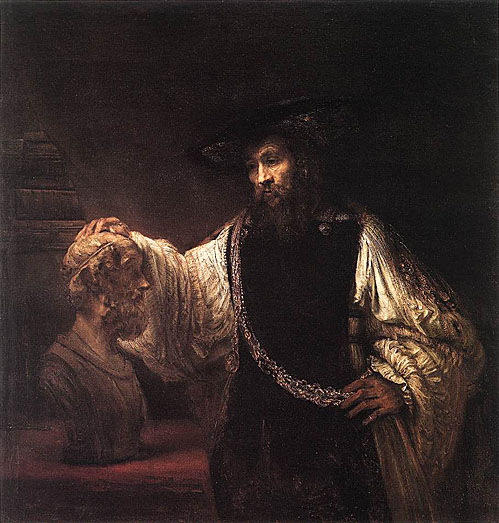
Artemisia
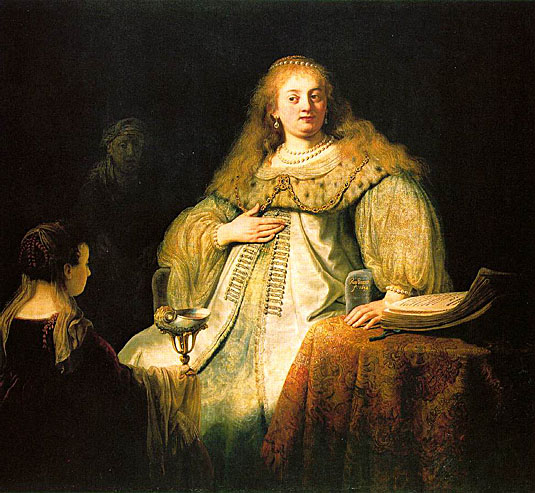
Dead Peacocks

Diana Bathing With The Stories Of Actaeon And Callisto

Dr Ephraim Bueno Jewish Physician and Writer

Family Group
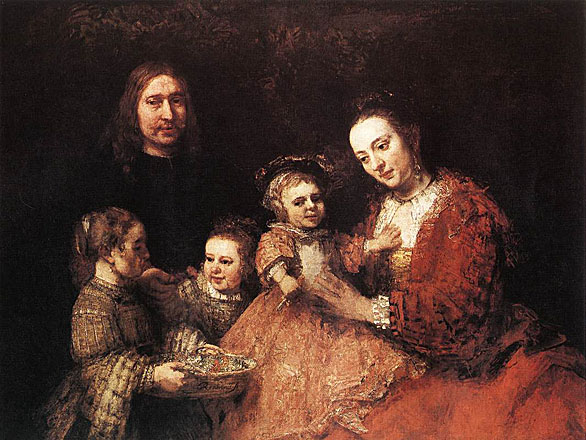
Flora
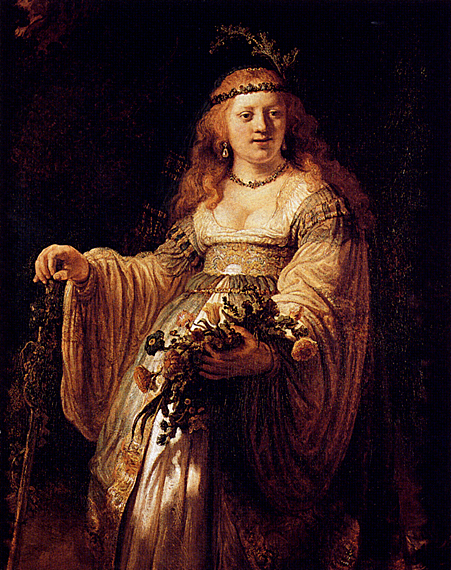
Frederick Rihel on Horseback
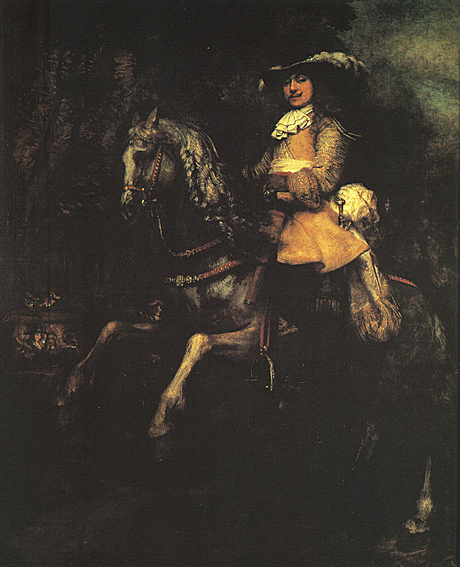
Frederick Rihel (1621 - 1681) came from Strasbourg and is first mentioned in Amsterdam in 1642, remaining there as a successful merchant until his death in 1681. As an official of the civic guard he took part in the procession which welcomed the Prince of Orange into Amsterdam in 1660.
Hendrickje Bathing in a River
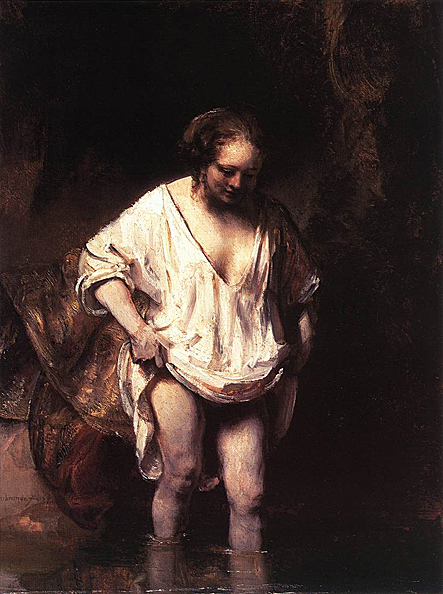
History Painting
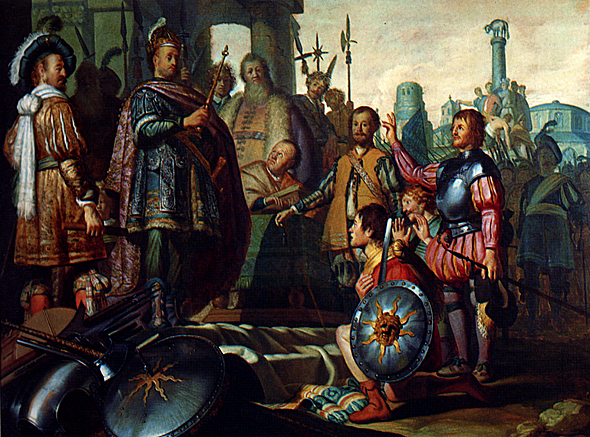
The topic of the painting concerns undoubtedly the magnanimity of some sovereign, who is seen standing to the left of the middle,
complete with scepter and emperor's crown. The combination of 16th century costumes and 17th century clothing of the man in the middle,
the modern weaponry and the classical ruins does not give an answer to the question whether the topic was taken from history or from Rembrandt's
own day. Behind the scepter Rembrandt self-assertively painted his own portrait as a young man.
Jeremiah Lamenting the Destruction of Jerusalem: 1630
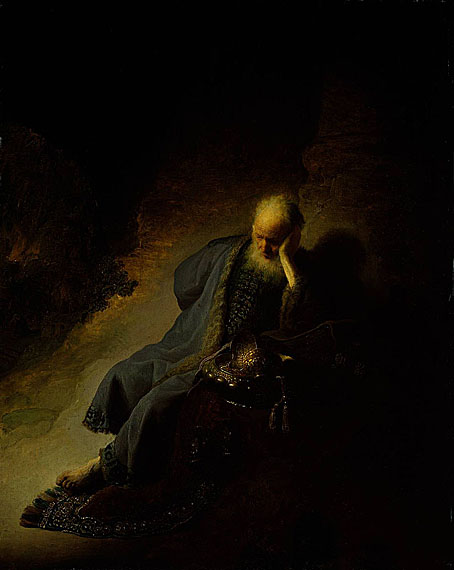
After his initial training in his native town of Leiden, Rembrandt spent a short but crucially important
period in the studio of the history painter Pieter Lastman in Amsterdam. He then returned to Leiden and set up as
an independent painter in 1625. He worked in the town for about six years until settling permanently in Amsterdam.
Rembrandt's early work shows the powerful influence of Lastman's broad, colourful style, as can be seen, for example, in the Tobit and Anna of 1626.
This well-preserved painting is one of the finest works of Rembrandt's Leiden period. For many years it was incorrectly
identified but it certainly shows Jeremiah; who had prophesied the destruction of Jerusalem, capital of Judah, by Nebuchadnezzar (Jeremiah, chapters 32, 33),
lamenting over the destruction of the city. In the distance on the left a man at the top of the steps holds clenched fists to his eyes: this is the last
king of Judah, Zedekiah, who was blinded by Nebuchadnezzar. The prominent domed building in the background is probably Solomon's Temple.
Johannes Wtenbogaert

Johannes Wtenbogaert was one of the most important religious leaders of the Dutch Golden Age. The young
Rembrandt painted this imposing and lively portrait in 1633, at a time when he was well on the way to becoming one of
Amsterdam's most celebrated portrait painters. He signed the painting with his first name, Rembrandt.
Man In Oriental Dress

Musical Allegory
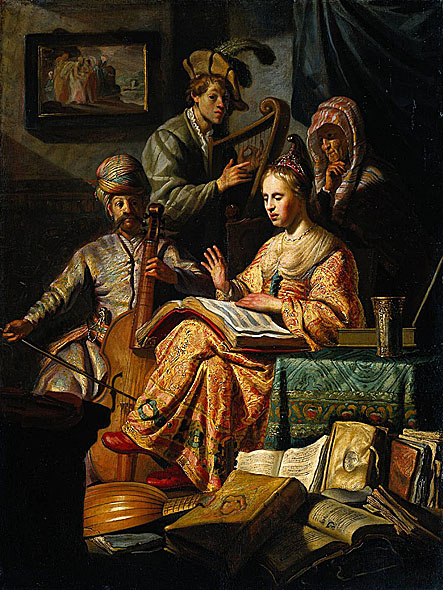
This is an early work by Rembrandt from 1626. He made it when he was twenty years old and signed it with the monogram
Monogram RH: Rembrandt Harmensz. The painting was only 'discovered' to be by Rembrandt in 1936.
Philosopher in Meditation
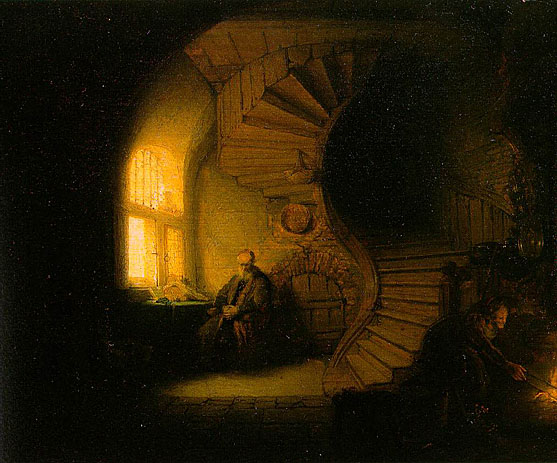
Jacob III de Gheyn
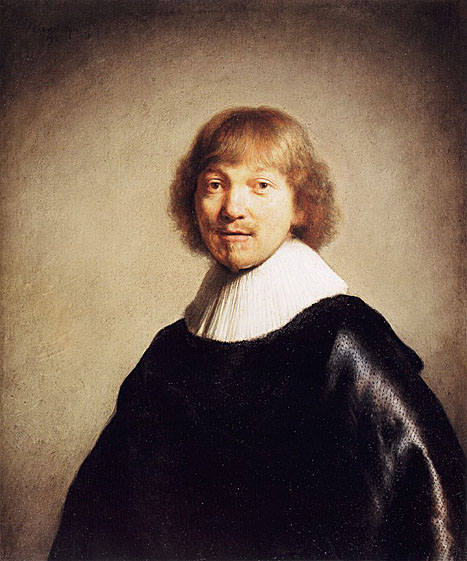
The painting has been given the title "takeaway Rembrandt" as it has been stolen four times since 1966 - the most recorded of any painting.
Between 14 August 1981 and 3 September 1981 the painting was taken from Dulwich Picture Gallery and retrieved when police arrested four men in a
taxi who had the painting with them. A little under two years later a burglar smashed a skylight and descended through it into the art gallery,
using a crowbar to remove the painting from the wall. The police arrived within three minutes but were too late to apprehend the thief. The
painting was missing for three years, eventually being found on 8 October 1986 in a luggage rack at the train station of a British army garrison in Munster, Germany.
The other two times, the painting was found underneath a bench in a graveyard in Streatham, on the back of a bicycle.
Each time the painting has been returned anonymously with nobody ever being charged for its disappearance.
Portrait Of A Man
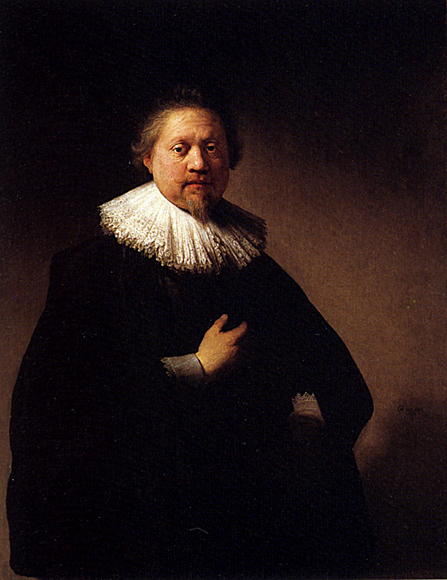
Portrait Of A Woman
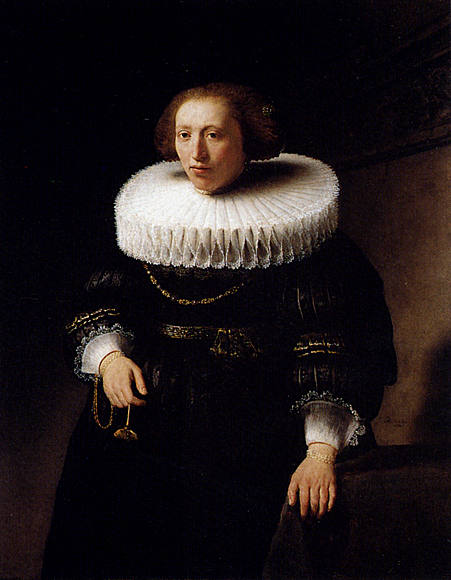
Portrait of a Young Man
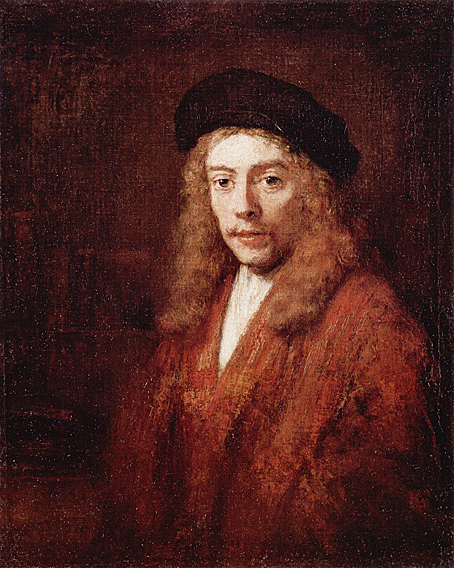
Portrait of a Young Woman with a Fan
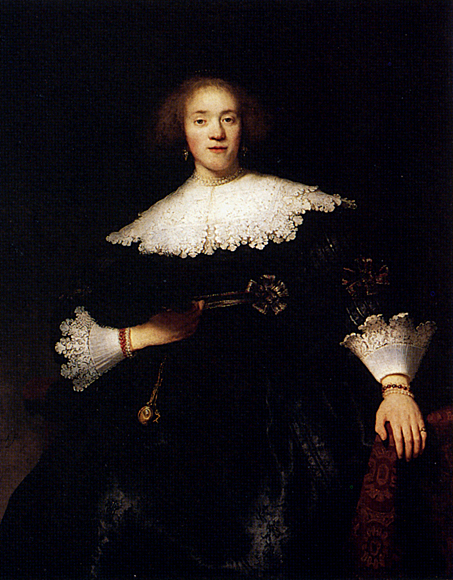
Amalia Van Solms
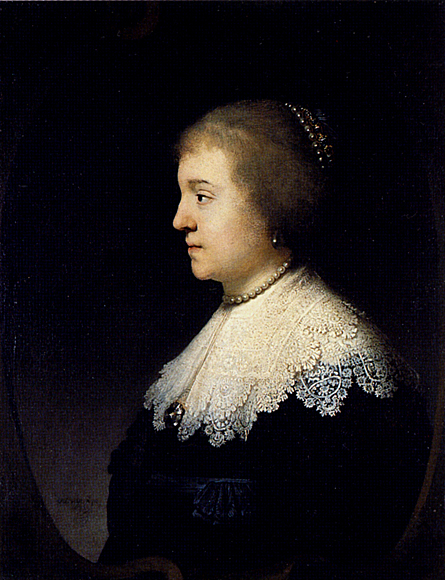
Amalia of Solms-Braunfels (31 August 1602 - 8 September 1675), countess of Solms-Braunfels, was the wife of Frederick Henry, Prince of Orange.
She was the daughter of Johan Albrecht I of Solms-Braunfels and Agnes of Sayn-Wittgenstein.
She spent her childhood at the parental castle at Braunfels. She became part of the train of Elizabeth, wife of Frederick V, Elector Palatine, the "Winter King"
of Bohemia. After imperial forces defeated Frederick V, she fled with the pregnant queen to the west. Shelter was denied to them because the emperor forbade it.
Elizabeth went into labour during their flight and Amalia helped her with her delivery.
The end of their journey was The Hague, where stadtholder Maurice of Nassau gave them asylum. They often appeared at his court, where Maurice's younger
brother Frederick Henry became infatuated with Amalia. She refused to become his lover and held out for marriage.
Portrait Of An Eighty Three Year Old Woman

Portrait Of An Old Man
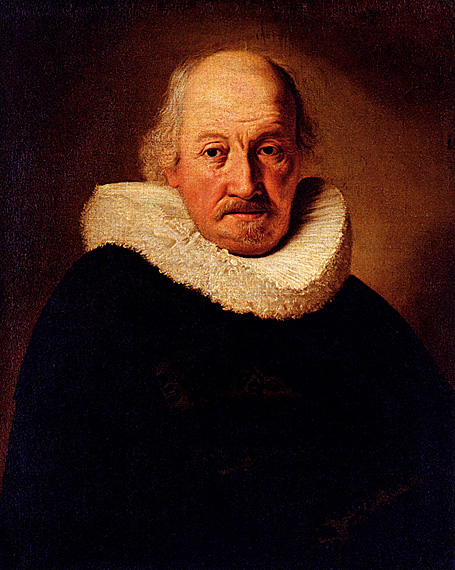
Portrait of Haesje van Cleyburgh
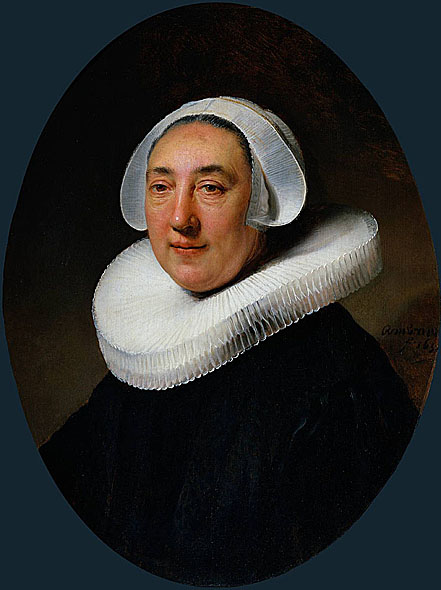
Haesje van Cleyburgh was fifty-one years old when Rembrandt painted her portrait. In this picture her face is the centre of attention and, like her linen cap and pleated ruff, is particularly finely painted. This contrasts strongly with her black clothes and the background which are more loosely painted. In the year he painted Haesje, 1634, Rembrandt had been living in Amsterdam for couple of years. During this time he had become one of the most important portrait painters.
Portrait of Johannes Elison
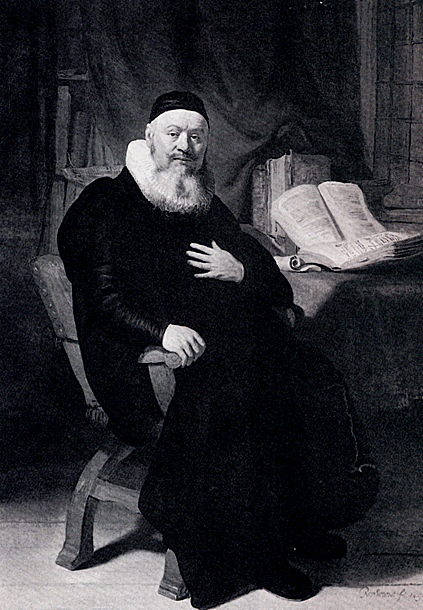
Portrait of Joris De Caullery
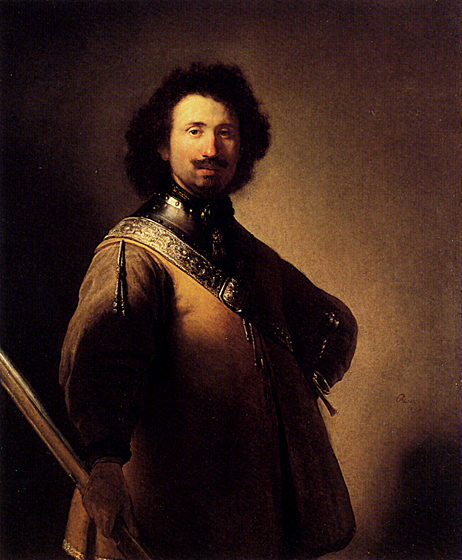
Portrait of Maerten Soolmans
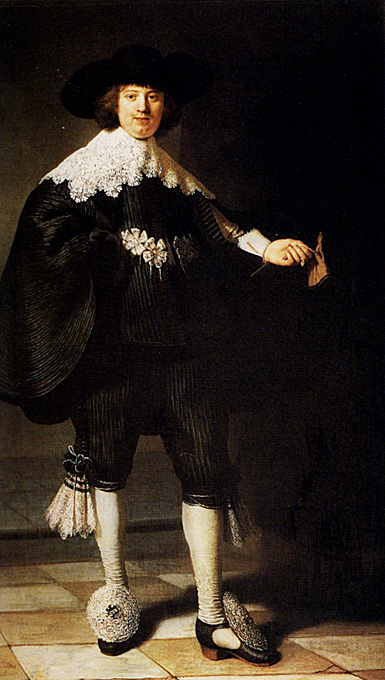
Portrait of Maria Trip
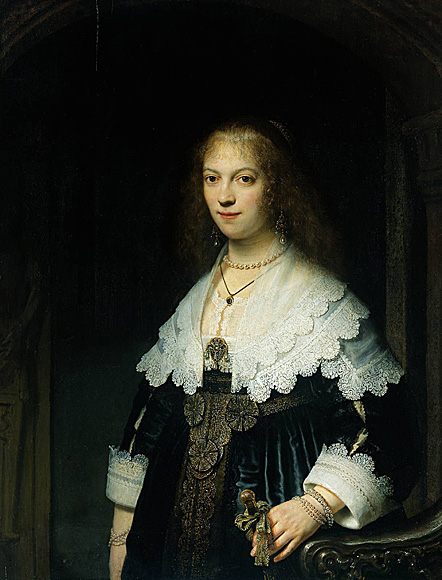
Rembrandt painted her in 1639. Maria was twenty years old and still unmarried. Two years later she married Balthasar Coymans who had gathered a fortune in business. He was thirty years older than Maria.
Portrait of Nicolaas van Bambeeck

Agatha Bas
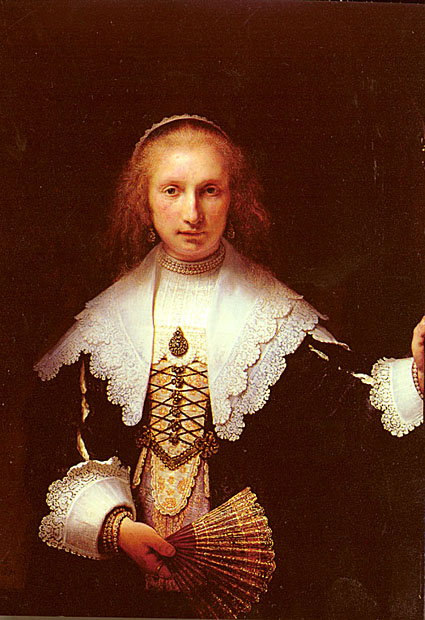
Portrait of Nicolaes Ruts
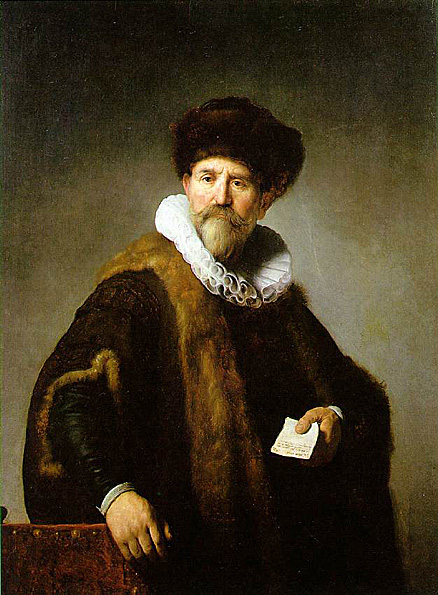
Portrait of the Artist at His Easel: 1660
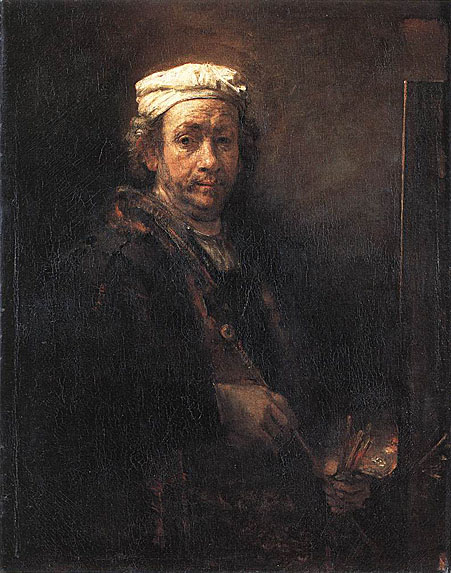
It wasn't until the nineteenth and twentieth centuries, when scholars studied Rembrandt's oeuvre as a whole, that it was discovered how very many times the artist had portrayed himself. The number is still a matter of contention, but it seems he depicted himself in approximately forty to fifty extant paintings, about thirty-two etchings, and seven drawings. It is an output unique in history; most artists produce only a handful of self-portraits, if that. And why Rembrandt did this is one of the great mysteries of art history.
Most scholars up till about twenty years ago interpreted Rembrandt's remarkable series of self-portraits as a sort of visual diary, a forty-year exercise in self-examination. In a 1961 book, art historian Manuel Gasser wrote, "Over the years, Rembrandt's self-portraits increasingly became a means for gaining self-knowledge, and in the end took the form of an interior dialogue: a lonely old man communicating with himself while he painted."
Many of these traditional studies focused particularly on Rembrandt's late self-portraits, as they reveal this rigorous self-reflection most profoundly. In an influential 1948 monograph on the artist, Jacob Rosenberg wrote of the ceaseless and unsparing observation which [Rembrandt's self-portraits] reflect, showing a gradual change from outward description and characterisation to the most penetrating self-analysis and self-contemplation. ... Rembrandt seems to have felt that he had to know himself if he wished to penetrate the problem of man's inner life.
More recent scholarship has shed additional light on Rembrandt's early self-portrayals. Quite a few, it is argued, were tronies--head-and-shoulder studies in which the model plays a role or expresses a particular emotion. In the seventeenth century there was an avid market for such studies, which were considered a separate genre (although for an artist they also served as a storehouse of facial types and expressions for figures in history paintings). Thus, for example, we have four tiny etchings from 1630 that show Rembrandt, in turn, caught in fearful surprise, glowering with anger, smiling gamefully, and appearing to snarl--each expressed in lines that themselves embody the distinct emotions. Rembrandt may have used his own face because the model was cheap, but perhaps he was killing two birds with one stone. The art-buying public--which now included people from many walks of life, not only aristocratic or clerical patrons, as in the past--went for etchings of famous people, including artists. By using himself as the model for these and other studies, Rembrandt was making himself into a recognizable celebrity at the same time that he gave the public strikingly original and expressive trophies. The wide dissemination of these and other prints was important in establishing Rembrandt's reputation as an artist.
Self Portrait: 1640

Self Portrait: 1658

Self Portrait: 1660

Self Portrait: 1669
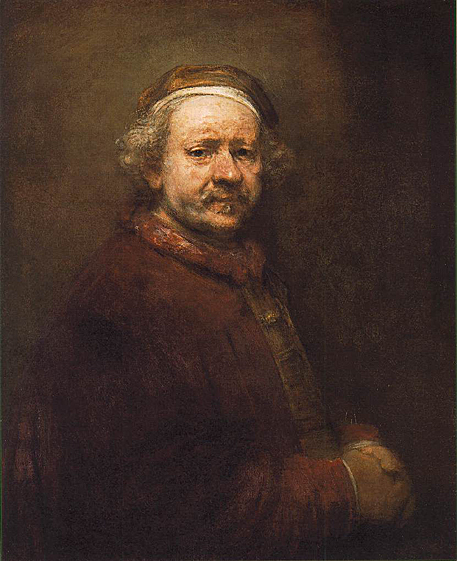
Self Portrait of Rembrandt
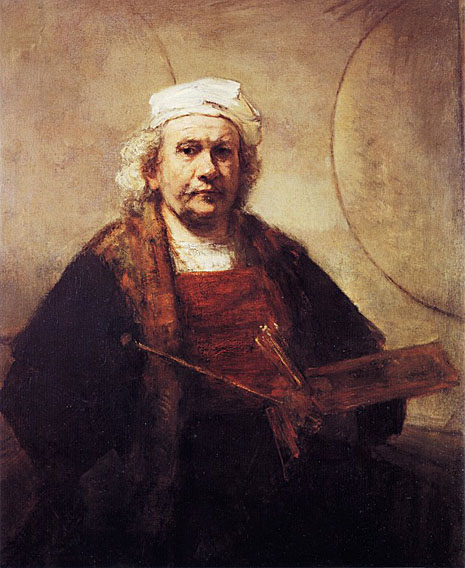
Self Portrait As A Young Man: 1634

Self Portrait at an Early Age: 1628

Self Portrait In A Gorget
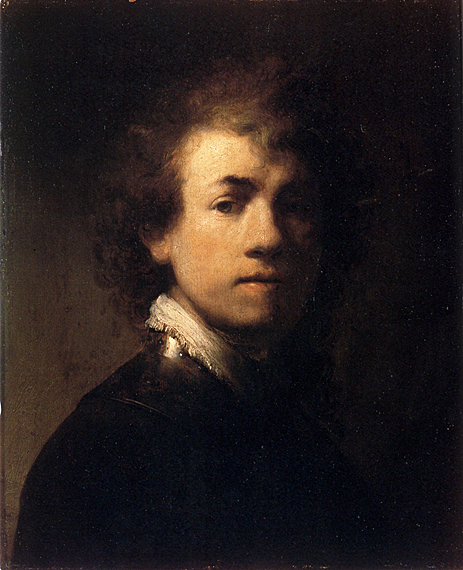
Self Portrait In A Plumed Hat

Self Portrait With Saskia

The Artist In His Studio
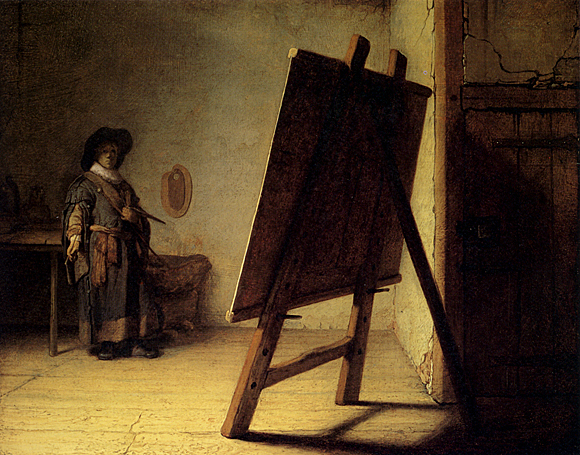
The Artist's Son Titus
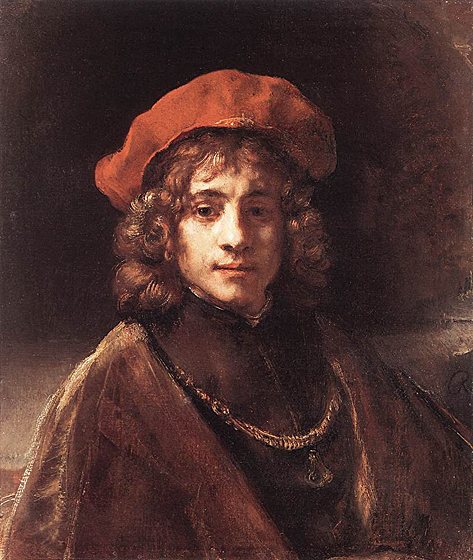
Titus
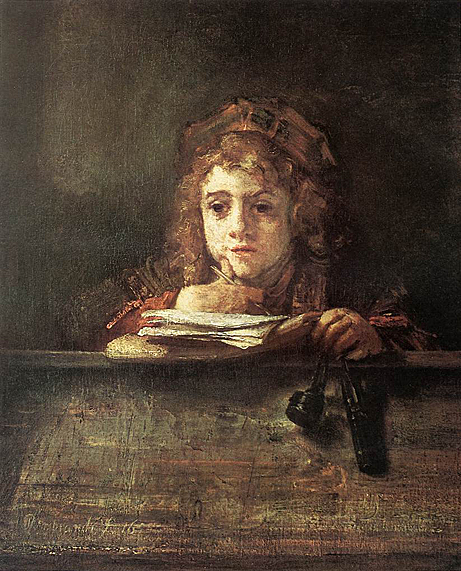
Titus van Rijn in a Monk's Habit
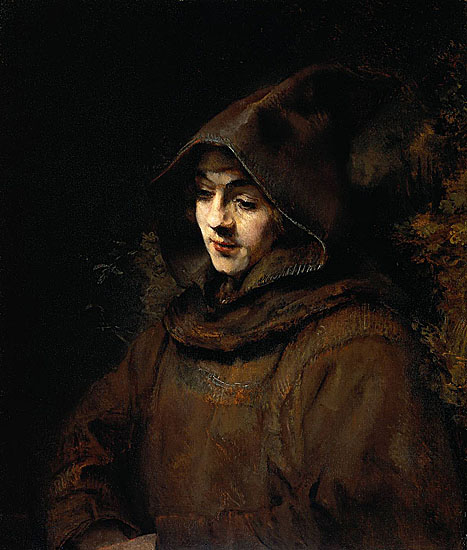
Titus van Rijn (Amsterdam 22 September 1641 - 1668) was the fourth and only surviving child of Rembrandt Harmenszoon van Rijn and Saskia van Uylenburgh. Titus is best known as a figure or model in his father's paintings and studies.
After Rembrandt's bankruptcy in 1656, Titus and his stepmother Hendrickje Stoffels were named as in charge of Rembrandt's affairs and an art-dealership began, specializing in Rembrandt's work. Titus made a will aged 15 at his father's insistence, making his father sole heir.
Titus in 1668 married Magdalena van Loo (1641-1669). Her father was Jan van Loo, silversmith and brother of Gerrit van Loo, his uncle, a lawyer in Het Bildt. The couple lived at Magdalena's mother's house on the Singel. They had one child: Titia (1669-1715).
Titus van Rijn died in 1668 and was buried in the Westerkerk in Amsterdam. His wife, mother-in-law and father all died a year later.
Portrait of Saskia van Uylenburgh
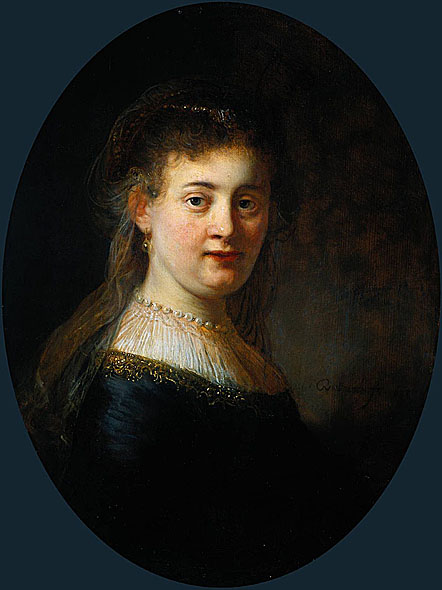
Born in Leeuwarden, Saskia was the youngest of eight children of Rombertus van Uylenburgh, a top lawyer, a town burgomaster and one of the founders of the University of Franeker. She became an orphan at age twelve, following the death of her mother, Sjoukje Ozinga, and her father five years later.
Saskia met Rembrandt by way of her cousin, Hendrick van Uylenburgh, a painter and an art dealer, who moved in 1625 from Poland to Amsterdam. From 1631 Rembrandt produced paintings for Uylenburg's Amsterdam and Mennonite clients. For four years Rembrandt trained pupils in his Academia; most notable among them were Govert Flinck, Gerbrandt van den Eeckhout and Ferdinand Bol.
The couple married on June 22, 1634 in Het Bildt, where Saskia had been raised by her sister Hiskje and her brother-in-law Gerard van Loo. Another sister, Antje, died young. After the burial Saskia helped her brother-in-law, the Polish professor, Johannes Maccovius teaching theology in Franeker.
Rembrandt gained financial success through his artwork, and in 1639 he and Saskia moved to a prominent house in the Jodenbreestraat. This house was next to her cousin's gallery in the Jewish quarter, and is now the Rembrandt House Museum. Three of their children died shortly after birth. On September 22, 1641 they had a son baptised, who was named Titus, after his mother's sister Titia (Tietje) van Uylenburgh. Saskia died the following year, probably from tuberculosis, and was buried in the Oude Kerk.
Portrait of Saskia With a Flower
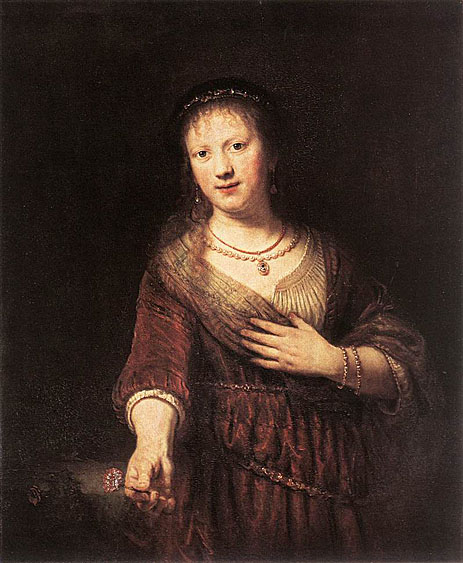
Saskia As Flora
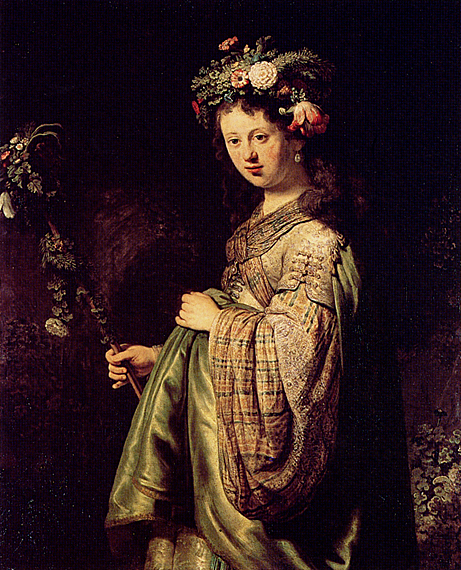
Saskia in Pompous Dress
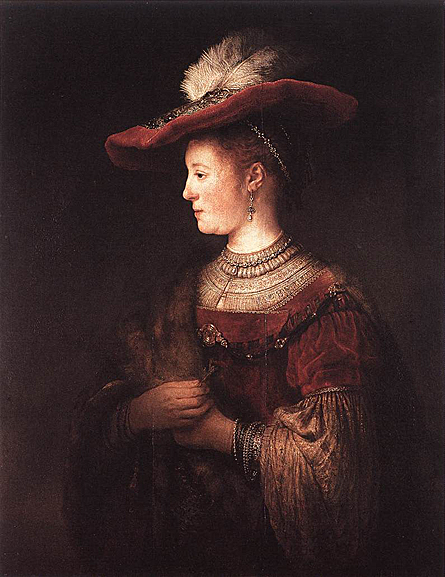
Saskia Laughing
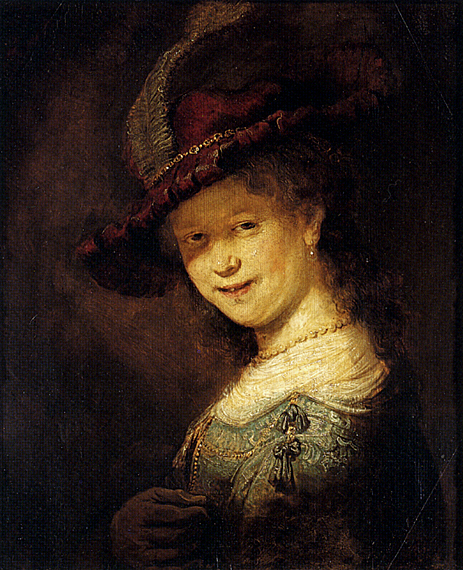
Saskia Wearing A Veil
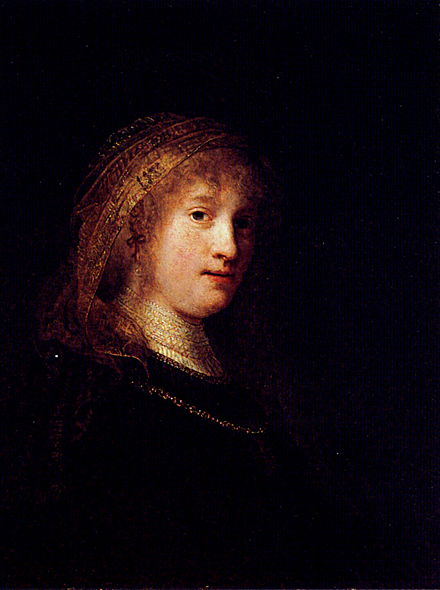
Portrait of a Man in Military Dress
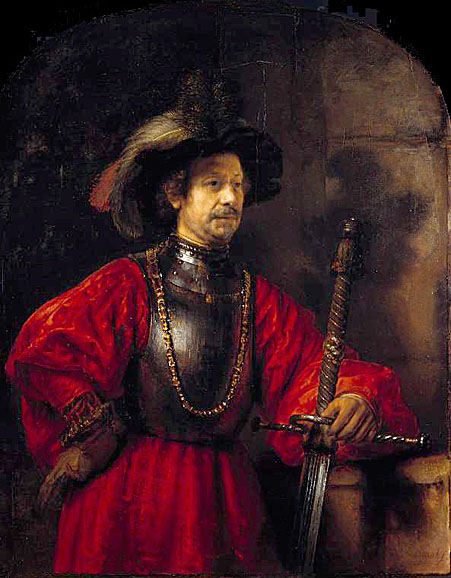
Repentant Judas Returning The Pieces Of Silver
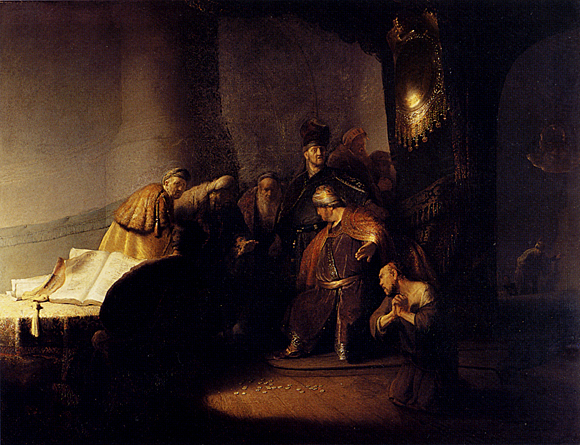
Samson ans Delilah
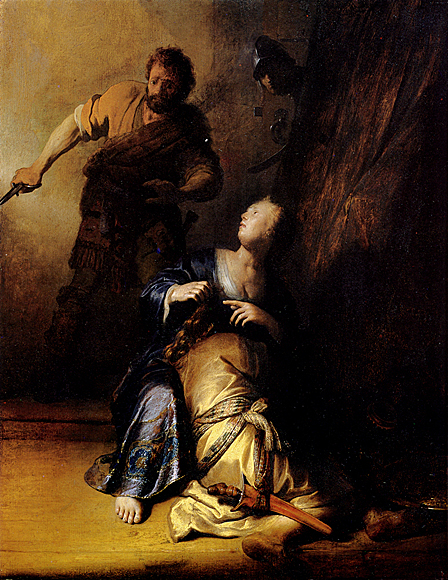
Sarah Waiting for Tobias
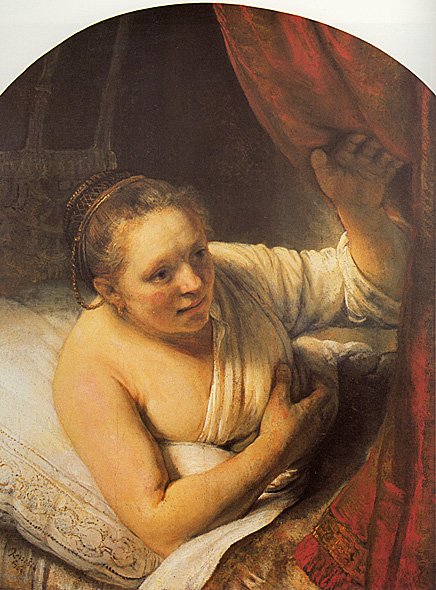
Susanna And The Elders

The Abduction of Ganymede

The Anatomy Lecture of Dr Tulp
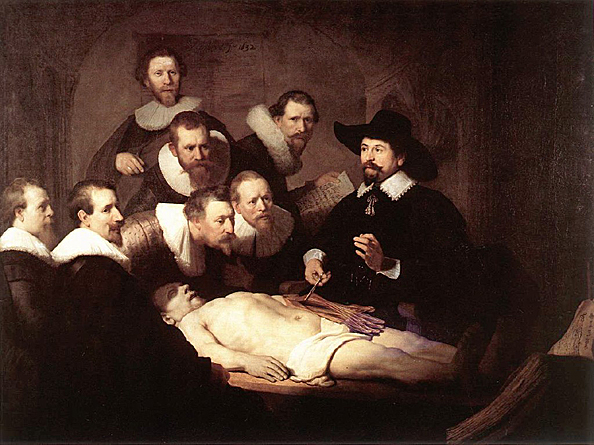
The Jewish Bride

The Jewish Bride (Detail)
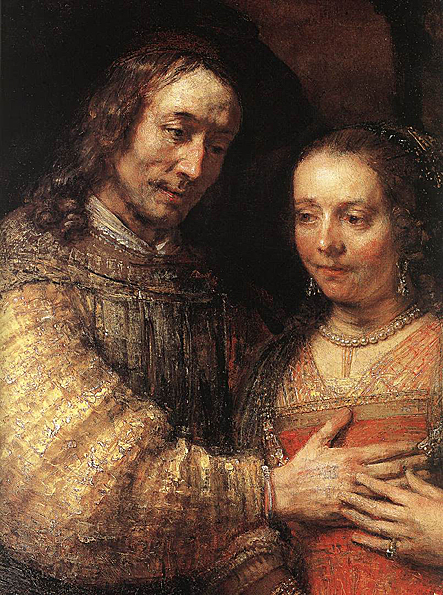
The Mennonite Minister Cornelis Claesz_ Anslo
In Conversation Wwith His Wife Aaltje
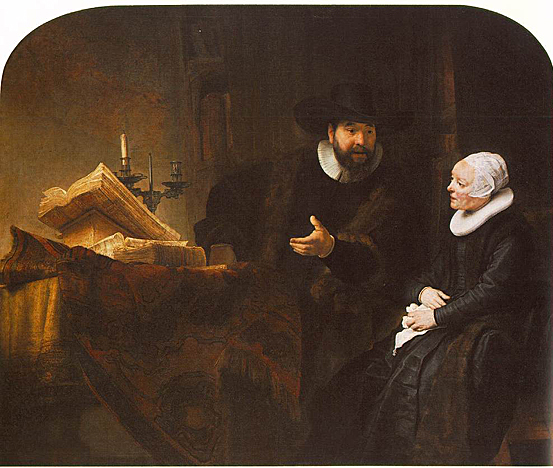
The Polish Rider
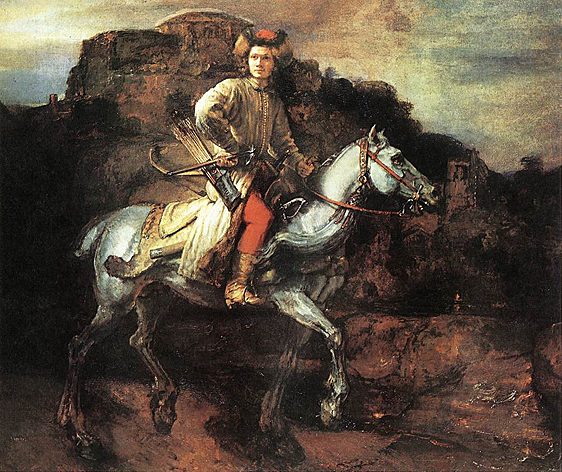
The Prophetess Anna
(aka Rembrandt's Mother)
.jpg)
The Baptism of The Eunuch

The Company of Frans Banning Cocq and Willem van Ruytenburch
aka The Night Watch
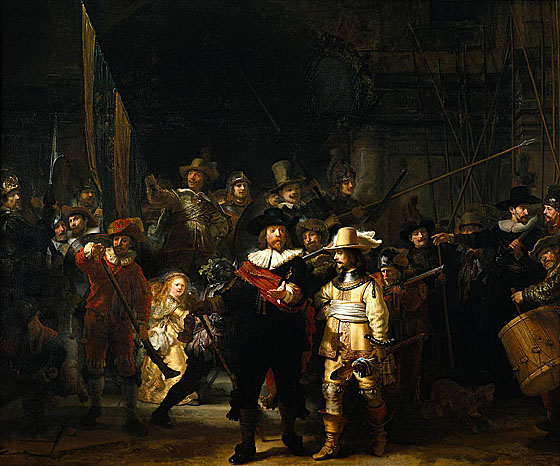
Night Watch or The Night Watch (Dutch: De Nachtwacht) is the common name of one of the most famous works by Dutch painter Rembrandt Harmenszoon van Rijn.
The painting may be more properly titled The Company of Frans Banning Cocq and Willem van Ruytenburch. It is on prominent display in the Rijksmuseum, Amsterdam, the Netherlands, and is its most famous painting.
The popular title long seemed to appropriately reflect the content, but was based upon a misapprehension due to dulling of the painting's surface; it is, in fact, a daylit scene. The following description appears next to a drawing of "De Nachtwacht" in the family album of Banning Cocq: De jonge heer van Purmerland als Capitein geeft last aan zijnen Lietenant de heer van Vlaerdingen om sijn compaignie Burgers te doen marcheren (literally: The young Lord van Purmerland as Captain gives order to his Lieutenant the Lord van Vlaerdingen to march his company Civilians).
The Conspiration of the Bataves
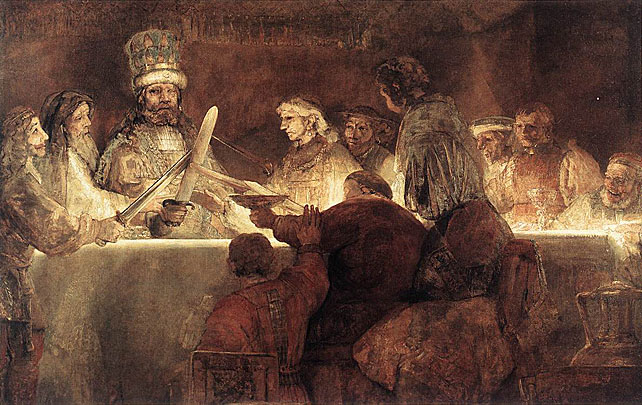
The Sampling Officials
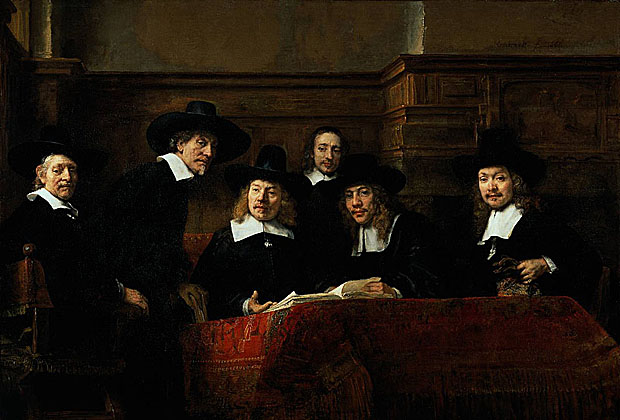
Rembrandt has portrayed the five syndics or sampling officials of the Amsterdam Drapers' Guild. Craftsmen would have been unable to practice their profession without being a member of the guild. Members were bound by a code of quality and price, but could also obtain assistance from the guild. An extensive apprenticeship system developed. Only a fully qualified master could become a member of the guild. Each guild had its patron saint: the patron of the painters guild was St Luke. as if they are looking up from their work for a moment. On the table around which the five men are sitting is a book, probably used a record of the accounts. A servant is standing at the back - the only one wearing a skullcap rather than a hat. The board of sampling officials controlled the quality of dyed ' laken. To compare the quality of the different bales, they used samples of cloth - hence the name sampling officials
Sampling official. The term ran from Good Friday to Good Friday. Sampling official - or syndic - was an honorary title for which no remuneration was made; they were therefore expected to have a reasonable income of their own. The sampling officials met three times a week to sample the cloth, ensuring that only the best quality fabric was traded in Amsterdam. The sampling officials portrayed by Rembrandt held office from Good Friday 1661 to Good Friday 1662. Rembrandt's Sampling Officials is a masterpiece among Dutch group portraits.
The Stone Bridge: ca 1638
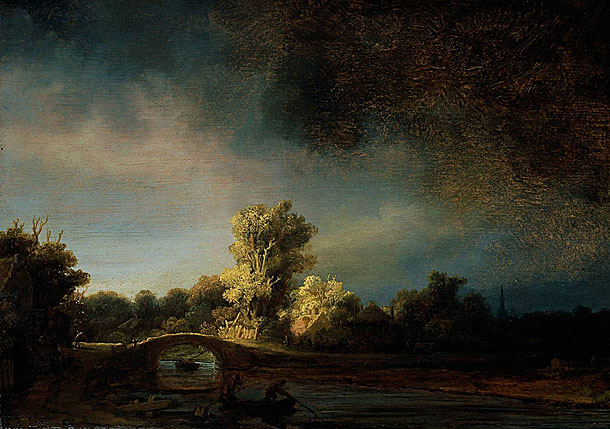
The Stoning of St Stephen: 1625

Tobit and Anna With A Kid
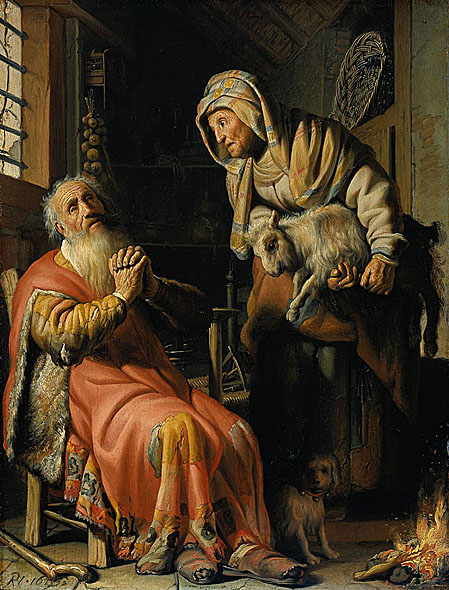
Jan Rijcksen And His Wife

Source: Art Renewal Center
This page is the work of Senex Magister
Return to Pagina Artis
Return to Bruce and Bobbie's Main Page.








































































































.jpg)







